Flaky, tender cod with mushrooms, leeks and tomatoes one of my favorite summer fish recipes. It's a great. easy method you can apply to lots of fish, using a number of different cultivated or wild mushrooms. It only takes one pan and is good for summer when you don't want to heat up the kitchen too much.
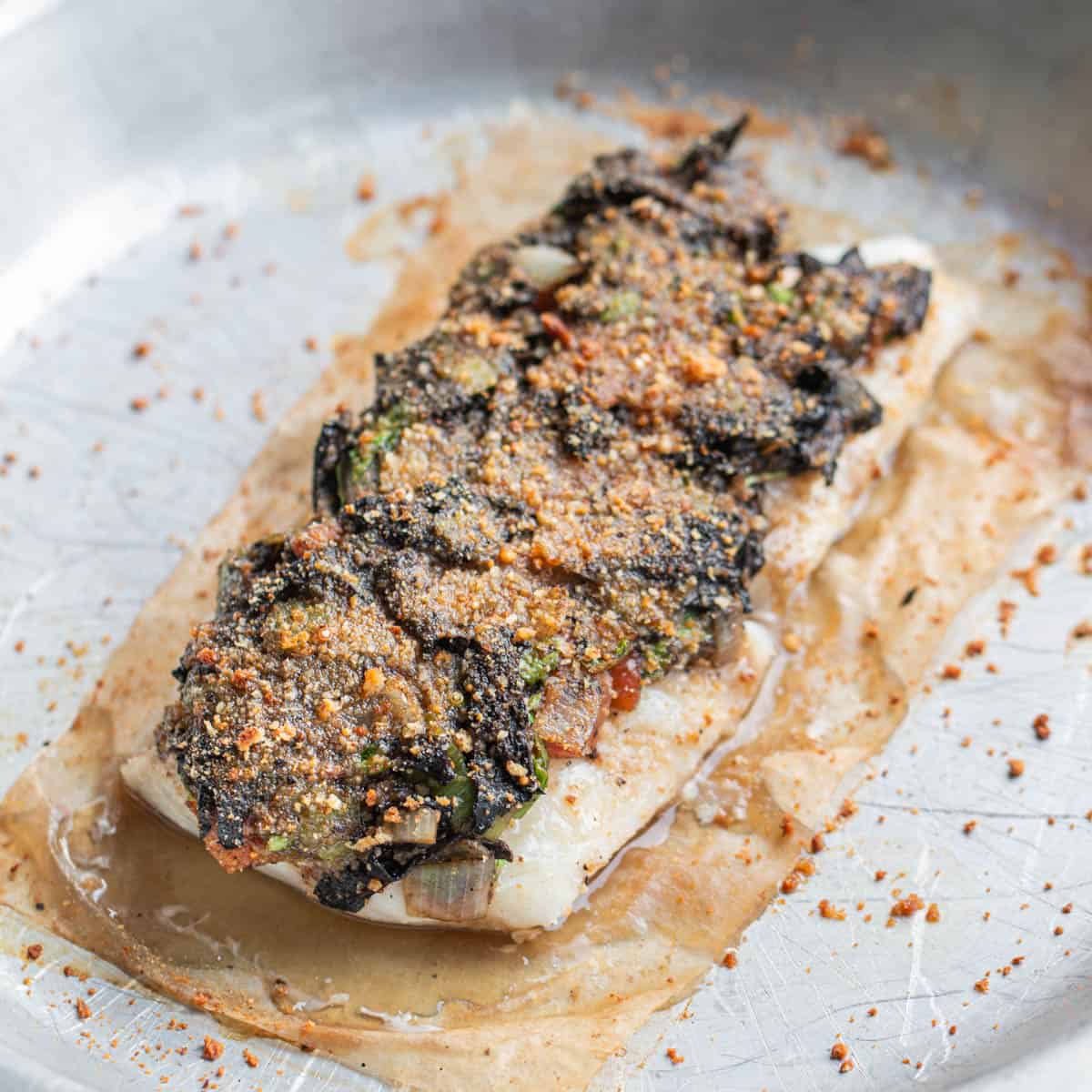
Black trumpets dry and rehydrate like a dream. They'll stay tender after rehydrating, so they were the first mushrooms I reached for here.
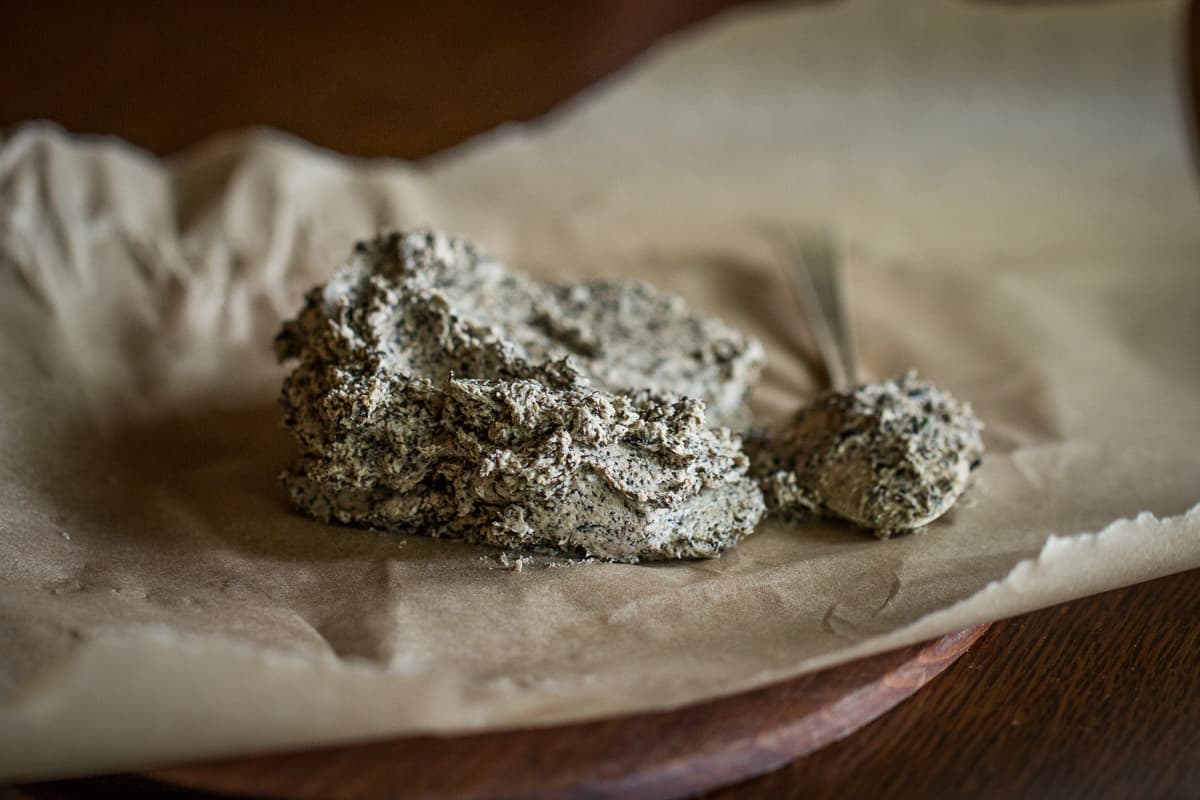
Other mushrooms with a similar structure like yellowfoot chanterelles will work. Porcini could work well here too. Or you can just use sliced button or crimini mushrooms if you have to.
How to Make Baked Cod with Mushrooms
I started working on the recipe for vegetable crusted fish in an old book by Swiss chef Fredy Girardet, a favorite chef of mine. The dish had no image, but I could see it in my mind.
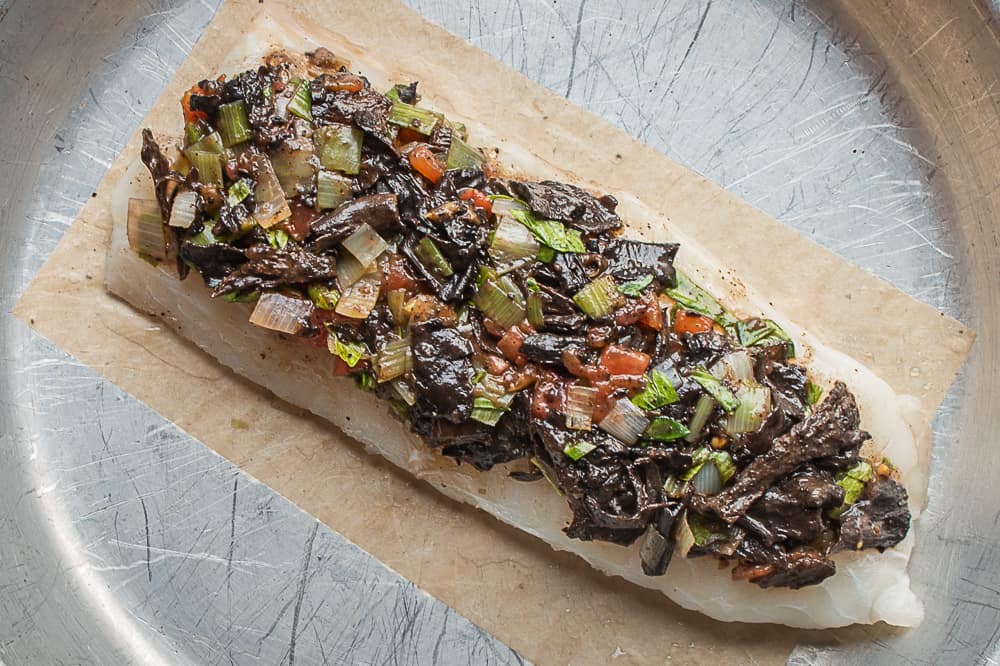
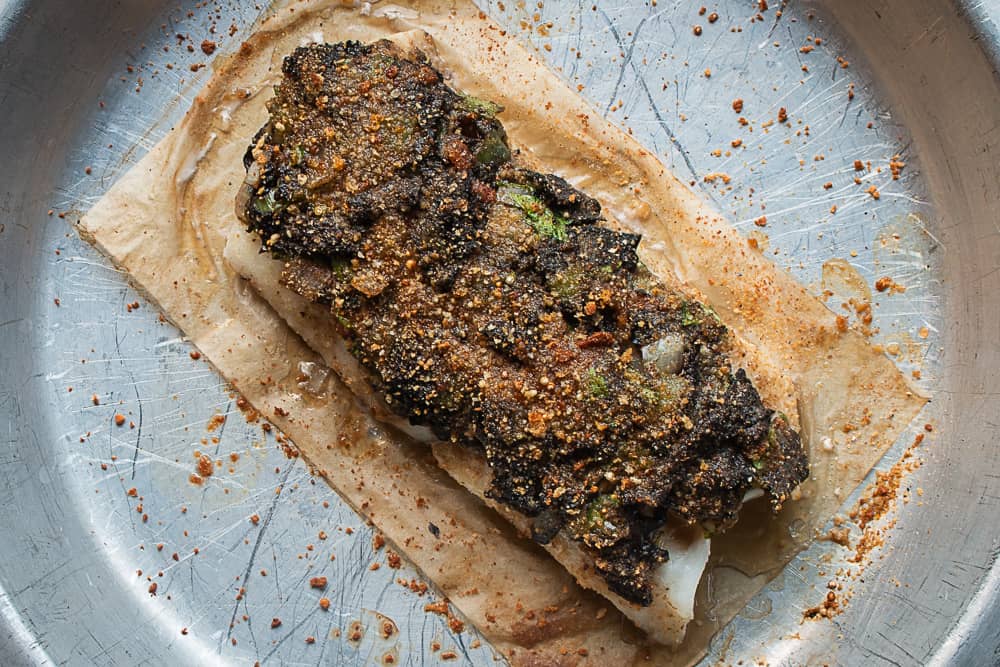
A simple recipe, it was just a baked fish spread with a rustic topping of sauteed vegetables, mushrooms and herbs.
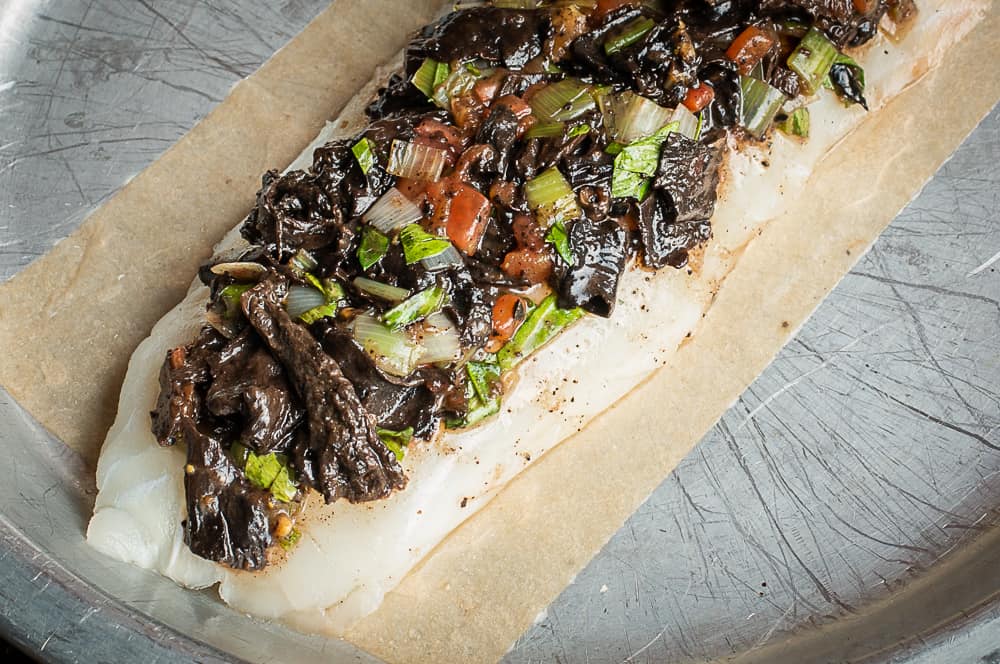
In America we hear the word crust and think crisp, or crunchy. Here it's just a flavorful topping that keeps the fish juicy as it cooks. Tweaking it around a bit wasn't difficult at all, and the black mushrooms make a great contrast to some white fleshed fish.
Chef's Tips
It's a great way to use some dried mushrooms, and you could use the topping on a number of different things, for example:
- Chicken cutlets can be sauteed and baked the same way.
- On top of slices of baked pumpkin or potatoes, baked the same way as a gratin
- Take a slice of good bread and toast it, then top with the mushroom topping, maybe some grated cheese, and bake. Cut into wedges and serve as an appetizer.
- The black trumpet-veggie mixture, without the breadcrumbs, would make a great foccaccia or flatbread topper.
- Use the mushroom filling and cheese to stuff halved, seeded tomatoes. Bake them until golden and crisp.
Related Posts
Baked Cod with Mushroom Crust
Equipment
- 1 baking pan and parchment paper
- 1 Nonstick skillet or saute pan
Ingredients
Black Trumpet-Vegetable Crust
- 4 oz leek tender parts only, cleaned and diced ¼ inch
- ½ cup vegetable stock
- 4 oz fresh mushrooms such as black trumpets
- 6 tablespoons black trumpet butter or use unsalted butter
- ¼ teaspoon salt
- A few grinds of fresh black pepper
- 4 oz finely peeled seeded tomatoes, finely chopped
- 2 Tablespoon sliced Italian parsley
- Vegetable oil or light olive oil for drizzling
- 4 tablespoons breadcrumbs
Fish
- 4 6 oz cod fillet or another flakey white fish like halibut, catfish, etc
- Lemon wedges for serving
Instructions
- In a saute pan, melt the butter over medium heat. Pour into a mixing bowl and reserve.
- Add the leeks and stock to the pan and cook until dry and the leeks are tender over medium high heat, stirring occasionally.
- Transfer the leeks to the bowl to cool. Cut the trumpets or other mushrooms into slices, then add the mushrooms to the leeks along with the tomato, melted butter, and parsley. Season to taste with salt and pepper.
- Spread the mushroom mixture over the cod. Sprinkle with breadcrumbs, criss-cross with oil, and broil at 500F for 10 minutes or until lightly browned and just cooked.
- Serve with lemon wedges and whatever vegetable accompaniments.

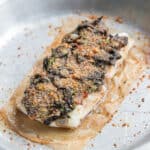
Leave a Reply